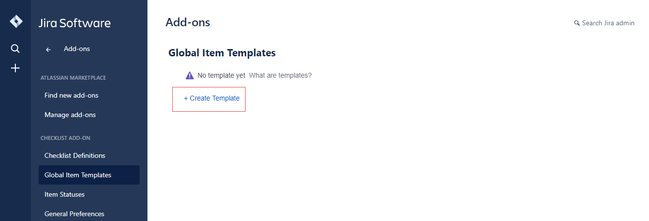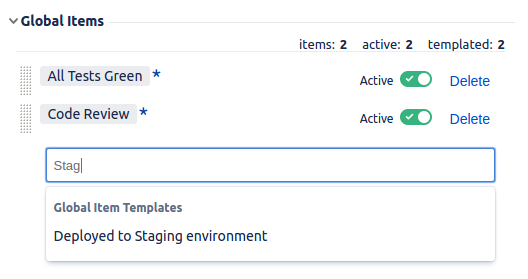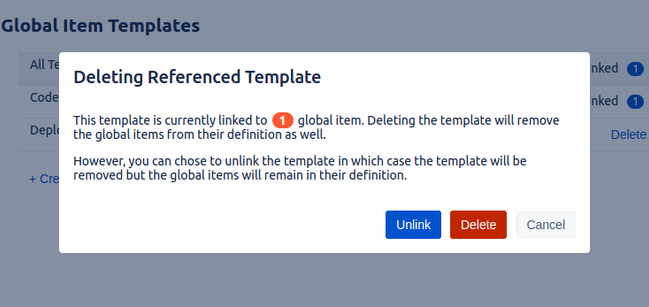Administrators who need to create similar checklists where only a few Global Items differ can use Global Item Templates to standardise their Checklist Definitions. By using the same template in multiple definitions, the administrator ensures that all items are exactly the same. Another benefit is that changes to the template will be reflected to all definitions using it. So the item's name is modified in one single place instead of having to modify every definition that has a similar item's name.
Ensure that you have administrator rights in JIRA and that you can access the administrative menus.
Viewing the Global Item Templates
To view the global item templates, perform the following steps:
- Navigate to Settings > Add-ons > Global Item Templates.
You can view the list of templates.
Creating a Template
To create a template, perform the following steps:
- Navigate to Settings > Add-ons > Global Item Templates.
- Click Create Template.
- Type the name for the template.
Using a Template
When adding a Global Item to a definition, while typing the item's name, an auto-complete dropdown will appear proposing you matching templates. Simply select the proposed template. Global Items which are created from a template will have the appearance of labels and will not be editable.
Template Links
When a template is being used in a Checklist Definition, the "linked" count will increase. If no "linked" count is displayed, you can safely remove the template since no definition is using it.
Deleting a Template
When deleting a template, if the template has been used in definitions, a dialog will open proposing two options:
| Unlink | Allows you to delete the template but will keep the items in their respective definitions. From that moment on, the Global Item becomes normal and can be edited. |
|---|---|
| Delete | Allows you to delete the template along with all the items in their respective definitions. |



